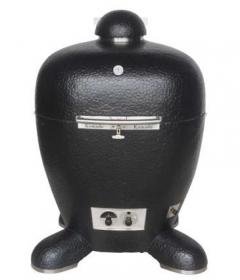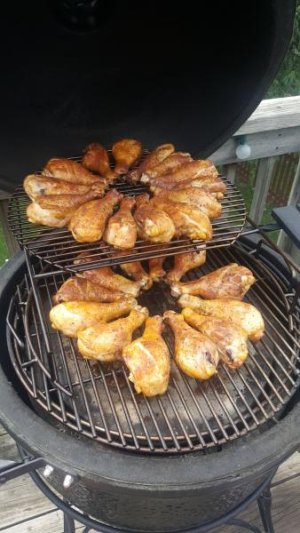The insulation and shape of the kamado means You have to approach 2 zone cooking a little differently. You can use a half stone deflector to create a direct and indirect side, but often you separate the cook into indirect and then direct periods by removing the deflector.
Kamado’s can get hotter fast, but they take forever to cool down. This typically means reverse searing works much better. You cook at a lower temp indirect, remove the deflector and open the air up and in a few minutes you can be searing on a super hot fire. Even better, you drop a grate in low in the Kamado and sear just over the coals. To get the most out of a kamado you want flexibility in the vertical.
You get a lot of usable space this way because you can do the indirect cooking of your chicken or pork or whatever on two (or more) levels due to the kamado’s greater vertical space. The searing is quick enough that it is not a big deal to do two batches, especially with a grate just over the coals where you are literally searing for 30 seconds a side, and your sear zone is the entire width of the firebowl. In this sense, the 24” kamado’s will have a higher capacity than a 26” kettle. Cooking on a single layer, they actually have less space since the inside diameter of the firebowl (direct cooking area) is closer to 21”.


